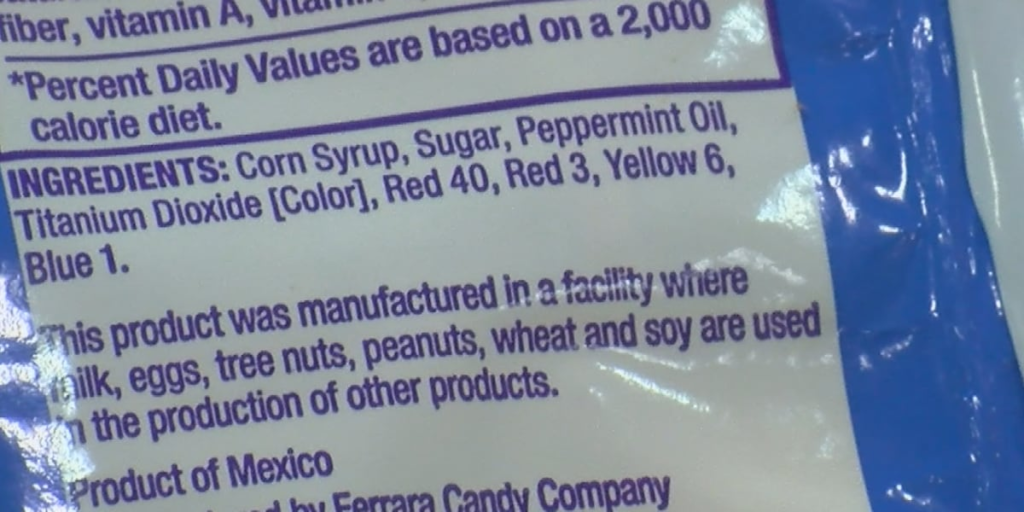On Wednesday, a significant shift occurred in the world of food safety as the Food and Drug Administration (FDA) decided to revoke the longstanding authorization for red dye No. 3 in food products and ingested drugs. For many, this might seem like just another regulation, but it could have profound implications for consumer safety, food manufacturers, and health enthusiasts alike. Let’s dive into the details and explore what this means for all of us.
Understanding Red Dye No. 3: What You Need to Know
What is Red Dye No. 3?
Red dye No. 3, scientifically known as erythrosine, is a synthetic dye used to enhance the color of various food items, candies, cosmetics, and even some pharmaceutical products. This dye has been a staple in many products due to its vibrant hue, especially in fruit-flavored snacks and desserts.
Why Did the FDA Revoke Its Authorization?
The decision to revoke authorization stemmed primarily from health concerns. Numerous studies have linked red dye No. 3 to various health issues, including:
- Hyperactivity in children
- Potential carcinogenic effects
- Allergic reactions in certain individuals
As research surrounding artificial dyes continues to evolve, the FDA aimed to prioritize consumer health and safety, leading to this crucial decision.
The Impacts of This Change
How Will This Affect Food Products?
-
Ingredient Reformulation: Manufacturers will need to reformulate products that currently contain red dye No. 3, which might lead to changes in taste or appearance.
-
Consumer Awareness: With growing concerns about food additives, consumers may seek more transparent and natural alternatives, pushing brands to adapt.
- Market Shifts: The removal of red dye No. 3 could influence market dynamics. Products that once relied on it may see decreased demand if consumers turn to more natural options.
What About Medications?
Ingested drugs that used this dye may also undergo reformulation. This could lead to:
-
Altered pill appearance: Patients may notice changes in the color of their medications, which could impact adherence if not communicated effectively.
- Increased regulation: Drug manufacturers must comply with FDA guidelines, making the whole process of drug formulation more stringent.
Frequently Asked Questions About Red Dye No. 3
1. What should consumers do now?
It’s a good time to check labels. As manufacturers adapt to the new guidelines, you may want to look out for options that use natural coloring agents instead. Always choose products that align with your health and wellness goals.
2. Are there safe alternatives to red dye No. 3?
Absolutely! Many products now opt for naturally derived colorants, such as beet juice or paprika extract, providing safer alternatives without compromising on vibrancy.
3. Will this affect food pricing?
While it’s still uncertain how widespread the changes will be, initial reformulations could lead to price adjustments. Over time, as brands adapt, pricing may stabilize.
Embracing Natural Options
As individuals become more aware of what they consume, a trend towards natural ingredients is becoming the norm. Here are some natural alternatives to consider that can provide vibrant colors without the adverse effects associated with artificial dyes:
-
Beet Juice: A stunning red to purple color that comes from beets.
-
Turmeric: This vibrant yellow spice can create a warm hue in products.
- Paprika: Offers a lovely orange-red tone commonly used in snacks and sauces.
The Future of Food Regulations
As the FDA continues to evaluate food safety standards and practices, it’s expected that more changes may follow. Keeping an eye on proposed regulations and their implications can help both consumers and manufacturers navigate this evolving landscape.
Conclusion: Stay Informed, Stay Healthy
The FDA’s revocation of red dye No. 3 reflects a commitment to consumer safety and health awareness. It’s essential for you to stay informed about changes in the food regulations to make educated choices about the products you consume.
So, what do you think about this decision? Are you ready to embrace these changes and explore natural food options? Share your thoughts and experiences below—let’s create a dialogue about what this means for our health and well-being!
















